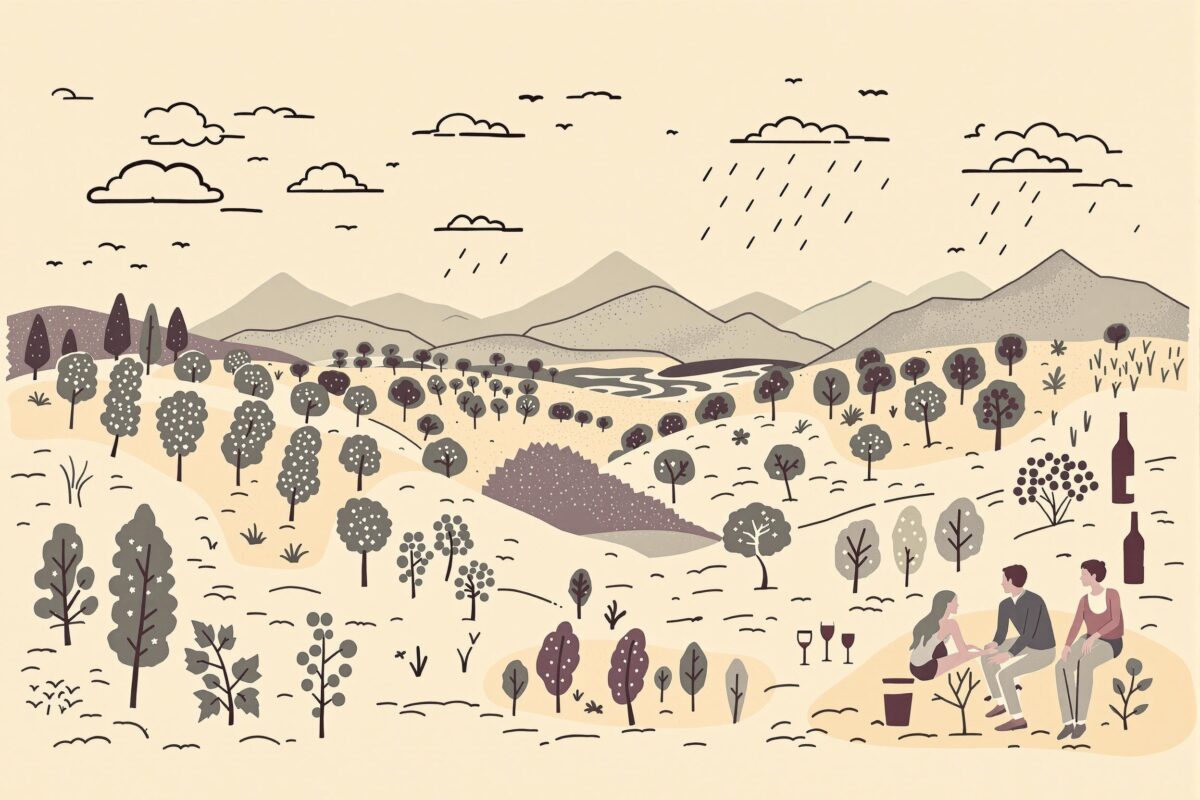Climate Change and the Wine Industry: A Toast to Sustainability
The world of wine, steeped in tradition and tied to the land, faces a formidable challenge: climate change. As temperatures rise and weather patterns become erratic, the very essence of winemaking—the delicate balance of terroir—is threatened. Sustainability isn’t just a trendy buzzword; it’s the lifeblood of the wine industry’s future. This exploration delves into the intricate dance between climate change and wine production, emphasizing the urgent need for innovative, eco-conscious practices.
Trend Analysis: Shifting Landscapes and Palates
Global Warming Reshapes Wine Regions
Imagine Bordeaux struggling to grow Cabernet Sauvignon or Napa Valley facing unprecedented heat waves. This isn’t science fiction; it’s the reality of a warming world. Traditional wine regions are undergoing dramatic transformations. Temperature increases and shifting precipitation patterns are pushing some regions beyond their limits for traditional varietals. Surprisingly, areas once deemed unsuitable for viticulture may become viable. This geographic reshuffling requires winemakers to adapt, exploring new grape varieties and innovative techniques.
The Rise of Green Wine: Consumer Demand Drives Change
Consumers are increasingly conscious of their environmental impact, and their choices are reshaping the wine industry. The demand for organic, biodynamic, and sustainably produced wines is on the rise. Transparency is paramount; consumers want to know where their wine comes from and how it’s made. This demand for eco-friendly vineyards and green practices empowers wineries to prioritize sustainability, creating a ripple effect throughout the industry.
Market Trends: Sustainability as a Value Proposition
Investing in sustainable practices is no longer just an ethical choice; it’s smart business. Sustainable wine production is gaining market share, and premium pricing for certified sustainable wines is becoming the norm. Investors are increasingly prioritizing businesses with strong environmental, social, and governance (ESG) profiles. Sustainability is becoming a core value, impacting every facet of the wine industry, from production to consumer engagement.
In-Depth Issue Breakdown: The Grape Harvest Under Fire
Wildfires: A Growing Threat to Vineyards
Wildfires, fueled by rising temperatures and prolonged droughts, pose a devastating threat. Smoke taint can ruin entire harvests, and direct fire damage can decimate vineyards, causing irreversible ecological and economic harm. Proactive measures like vegetation management, creating firebreaks, and advanced monitoring systems are now vital for vineyard survival. The increased frequency and intensity of wildfires demand unprecedented resilience within the wine industry.
Water Scarcity: Irrigation Challenges in a Thirsty World
Water, the lifeblood of any vineyard, is becoming increasingly scarce. Climate change is exacerbating drought conditions, forcing winegrowers to grapple with water restrictions and rising irrigation costs. Efficient water management through drip irrigation, water recycling, and drought-resistant grape varieties is no longer optional; it’s essential for survival.
Innovative Solutions: Cultivating a Sustainable Future
AI: The Vineyard’s New Best Friend
Artificial intelligence is revolutionizing vineyard management. Precision viticulture, powered by AI, optimizes resource use by analyzing weather patterns, soil conditions, and vine health. This allows for targeted irrigation, fertilization, and pest control, boosting efficiency and minimizing environmental impact.
Drought-Resistant Grapes: Adapting to a Changing Climate
As traditional varietals struggle in drier conditions, the search for drought-resistant grapes is intensifying. Research and development efforts are focused on identifying and breeding varieties that thrive with less water without compromising wine quality. These resilient vines offer a lifeline to wine regions facing water scarcity.
Regenerative Farming: Nurturing the Soil, Sequestering Carbon
Regenerative agriculture is more than a farming method; it’s a philosophy. Practices like no-till farming and cover cropping enhance soil health, boost biodiversity, and increase carbon sequestration. Healthy soil holds water more effectively, reducing the need for irrigation. Regenerative farming is a cornerstone of sustainable viticulture, contributing to a healthier planet and more resilient vineyards.
Visual Comparisons: Seeing the Impact of Climate Change
Temperature Rise and Phenology Shifts
Visual data paints a stark picture of warming trends. Graphs depicting rising temperatures and timelines of grape phenology stages reveal earlier budburst, flowering, and veraison. These shifts require adjustments in vineyard management and winemaking techniques to maintain quality and yields.
Grape Harvest Yields: Declining Trends
Visualizing historical harvest data alongside recent figures illustrates the tangible impact of climate change. Declines in yield, driven by extreme weather events, underscore the economic consequences of a warming world. Data-driven insights are crucial for developing mitigation strategies.
Practical Tips for Eco-Friendly Vineyards
Soil Health Management: The Foundation of Sustainability
Healthy soil is the bedrock of sustainable winegrowing. No-till farming, cover cropping, and compost application enhance soil structure, fertility, and carbon sequestration. These practices not only benefit the environment but also improve water infiltration and reduce erosion.
Water Recycling: Making Every Drop Count
Water-wise viticulture is crucial in a water-stressed world. Drip irrigation, wastewater treatment, and rainwater harvesting minimize water usage. Efficient irrigation scheduling, based on real-time soil moisture data, optimizes water application.
Energy Efficiency: Powering Vineyards Responsibly
Renewable energy sources, like solar and wind power, reduce reliance on fossil fuels. Energy-efficient equipment and building design minimize energy consumption in wineries. These practices contribute to a smaller carbon footprint and a more sustainable future.
Conclusion: Raising a Glass to a Sustainable Future
The future of wine is inextricably linked to sustainability. Embracing eco-conscious practices, from vineyard to winery, is not just an option; it’s an imperative. As consumers, we can support wineries committed to environmental stewardship, ensuring that future generations can continue to savor the fruits of the vine. The journey towards a sustainable wine industry requires collective action, innovation, and a commitment to protecting the planet, one delicious glass at a time.
